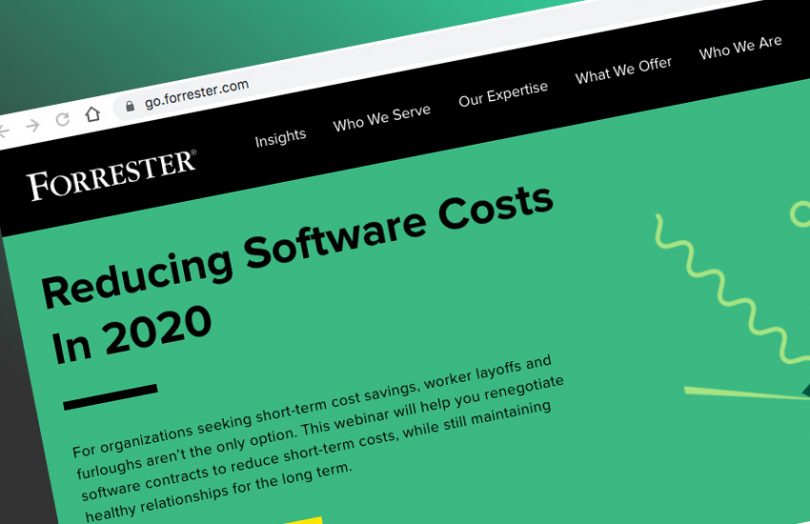Yesterday at Consensus Distributed, Martha Bennett, VP and Principal Analyst at Forrester gave her view of the 2020 state of enterprise blockchain or distributed ledger technology (DLT), referring to blockchain as a revolutionary technology.
Following the hype that peaked in 2018, this year there are mainly projects that can deliver real benefits. “One of the overall impacts of COVID-19 is the almost instant digitization. And that in itself is likely to lead to an acceleration in certain blockchain projects,” said Bennett. Those projects that are advanced are unlikely to be stopped.
However, because of new constraints on resources, speculative projects will be dropped and further proofs of concept are unnecessary because we know the technology works. At the next level of progression, pilot projects need to have a clear path to production. While research and development have not come to a halt, in the current climate, projects have to have a clear benefit and must map to corporate goals such as ESG.
The gap between a pilot and production is still significant for both non-technical and technical reasons, in part because it’s still an emerging technology and education is required. Plus, the proliferation of blockchain frameworks is confusing.
“It’s about a handful (of technologies) that have really crystallized and are standing out and gaining traction in the enterprise. And indeed, a number of them are actually represented on this panel,” said Bennett. The panel included Hyperledger (Fabric, Sawtooth, Indy +), R3 (Corda), and Kaleido (Ethereum).
Blockchain won’t work on its own as it’s usually part of an end-to-end process and needs to work with other technologies. There needs to be integration with ERP systems and interoperability between blockchains has taken center stage. That’s because with more platforms going live, enterprises realize they may need to participate in more than one network. She referred to the different degrees of interoperability, whether it’s just sending messages, transferring value, or interoperating at state level.
At the technical level, Bennett noted the increasing trend toward modularity, such as separating the smart contract layer from the ledger layer. Another example is gaining scale by having the consensus separate from the ledger. She didn’t have time to go into detail, but we can add examples.
In the case of smart contracts, several protocols offer smart contract language choices, and DAML now works with most popular enterprise blockchains and claims to future proof organizations by making it easy to switch ledgers. The second example is public enterprise ledger Hedera Hashgraph which recently launched a consensus service that can be used by permissioned networks or centralized databases. But it’s not all about technology.
“Blockchains are 80% business. I venture to state that all those technology problems that people are working on and where sometimes a solution may not be as close as people want it to be, they will still be solved before the non-tech issues and ecosystem challenges will be resolved,” said Bennett. She outlined areas such as data sharing, process definitions, ecosystem governance, regulatory requirements and antitrust legislation.
But she sees the biggest hurdle for those with existing pilots and how they expand from a small network to a broader one while ensuring incentives exist for all participants.
“This is a revolutionary technology and I don’t use that term lightly, but it’s also absolutely clear that you need to start small,” said Bennett. She sees the most successful projects as using smart contracts and tokenization but in ways that are not threatening and optimize existing systems rather than requiring complete replacements.
Sometimes blockchain should be used to lay foundations, even when it may not seem absolutely necessary for initial use cases.
Bennett concluded: “Without using those newer technologies, you will never get to that more collaborative way of working, that coopetition that companies also need to learn about, that really are the foundation for process changes that we all need.”






